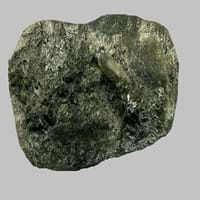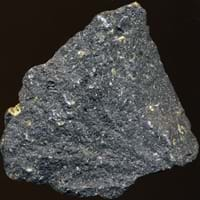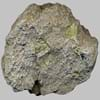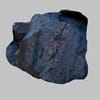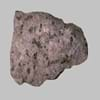Definition
Kenyte is a variety of porphyritic phonolite or trachyte rock with rhomb shaped phenocrysts of anorthoclase with variable olivine and augite in a glassy matrix
Basalt is a common extrusive igneous rock formed by the rapid cooling of basaltic lava exposed at or very near the surface of Earth
Discoverer
J. W. Gregory
Georgius Agricola
Etymology
From the mountain ranges- Mount Kenya and is named by J. W. Gregory in 1900
From Late Latin Basaltes (variant of basanites ), very hard stone, which was imported from Ancient Greek Basanites
Class
Igneous Rocks
Igneous Rocks
Sub-Class
Durable Rock, Medium Hardness Rock
Durable Rock, Medium Hardness Rock
Group
Not Applicable
Volcanic
Other Categories
Fine Grained Rock, Opaque Rock
Fine Grained Rock, Opaque Rock
Texture
Glassy, Granular
Glassy, Massive, Porphyritic, Scoriaceous, Vesicular
Color
Brown, Buff, Cream, Green, Grey, Pink, White
Black, Brown, Light to Dark Grey
Durability
Durable
Durable
Scratch Resistant
Yes
Yes
Appearance
Banded and Foilated
Dull and Soft
Interior Uses
Decorative Aggregates, Entryways, Homes, Interior Decoration, Kitchens
Floor Tiles, Homes, Hotels, Kitchens
Exterior Uses
As Building Stone, Garden Decoration, Paving Stone
As Building Stone, Paving Stone, Garden Decoration, Office Buildings
Other Architectural Uses
Curbing
Curbing, Whetstones
Construction Industry
As Dimension Stone, Cement Manufacture, Construction Aggregate, for Road Aggregate, Landscaping, Making natural cement, Manufacture of Magnesium and Dolomite Refractories, Production of Glass and Ceramics
Arrowheads, As Dimension Stone, Cobblestones, Cutting Tool, Rail Track Ballast, Roadstone
Medical Industry
Not Yet Used
Not Yet Used
Antiquity Uses
Artifacts, Monuments, Sculpture
Artifacts, Monuments
Commercial Uses
Cemetery Markers, Creating Artwork
An Oil and Gas Reservoir, Commemorative Tablets, Creating Artwork, Used in aquariums
Types
Not Available
Alkaline Basalt, Boninite, High Alumina Basalt, Mid Ocean Ridge Basalt (MORB), Tholeiitic Basalt, Basaltic trachyandesite, Mugearite and Shoshonite
Features
Application of acids on the surface causes cloudy frosting, Available in Lots of Colors and Patterns, Dissolves in hydrochloric acid, Is one of the oldest rock
Has High structural resistance against erosion and climate, Very fine grained rock
Archaeological Significance
Famous Monuments
Data Not Available
Easter Island in the Polynesian Triangle, Pacific Ocean, Gateway of India in Mumbai, India, Gol Gumbaz in Karnataka, India
Famous Sculptures
Data Not Available
Data Not Available
Formation
Kenyte is a fine-grained, hard rock which is a type of metasomatite, essentially altered basalt. It forms with or without crystallization, either below the surface as intrusive rocks or on the surface as extrusive rocks.
Basalt forms when lava reaches the Earth's surface near an active volcano. The temperature of lava is between 1100 to 1250° C when it gets to the surface.
Mineral Content
Albite, Amphibole, Biotite, Cancrinite, Feldspar, Hornblende, Plagioclase, Pyroxene, Sodalite
Olivine, Plagioclase, Pyroxene
Compound Content
Aluminium Oxide, CaO, Iron(III) Oxide, FeO, Potassium Oxide, MgO, MnO, Sodium Oxide, Phosphorus Pentoxide, Silicon Dioxide, Titanium Dioxide
Aluminium Oxide, CaO, Iron(III) Oxide, FeO, Potassium Oxide, MgO, MnO, Sodium Oxide, Phosphorus Pentoxide, Silicon Dioxide, Titanium Dioxide
Types of Metamorphism
Burial Metamorphism, Cataclastic Metamorphism, Impact Metamorphism
Contact Metamorphism
Types of Weathering
Biological Weathering
Biological Weathering
Types of Erosion
Chemical Erosion, Coastal Erosion
Not Available
Grain Size
Fine Grained
Fine Grained
Fracture
Conchoidal to Uneven
Conchoidal
Streak
White, Greenish White or Grey
White to Grey
Porosity
Highly Porous
Less Porous
Luster
Greasy to Dull
Not Available
Cleavage
Poor
Not Available
Toughness
Not Available
2.3
Specific Gravity
2.6
2.8-3
Transparency
Translucent to Opaque
Opaque
Density
2.6 g/cm3
2.9-3.1 g/cm3
Specific Heat Capacity
Not Available
Resistance
Heat Resistant, Impact Resistant, Wear Resistant
Heat Resistant, Pressure Resistant, Wear Resistant
Deposits in Eastern Continents
Asia
Indonesia, Iran, Russia, Saudi Arabia, Sri Lanka, Taiwan, Thailand, Turkey, Turkmenistan, Vietnam
India, Russia
Africa
Angola, Egypt, Madagascar, Namibia, Nigeria, South Africa
South Africa
Europe
Andorra, Finland, France, Germany, Great Britain, Italy, Norway, Portugal, Spain, Sweden
Iceland
Others
Greenland
Not Yet Found
Deposits in Western Continents
North America
Canada, USA
Canada, USA
South America
Brazil, Chile, Colombia, Uruguay, Venezuela
Brazil
Deposits in Oceania Continent
Australia
New Zealand, Queensland, South Australia, Tasmania, Western Australia
Not Yet Found
Kenyte vs Basalt Characteristics
Though some rocks look identical, they have certain characteristics which distinguish them from others. Characteristics of rocks include texture, appearance, color, fracture, streak, hardness etc. Kenyte vs Basalt characteristics assist us to distinguish and recognize rocks. Also you can check about Properties of Kenyte and Properties of Basalt. Learn more about Kenyte vs Basalt in the next section. The interior uses of Kenyte include Decorative aggregates, Entryways, Homes, Interior decoration and Kitchens whereas the interior uses of Basalt include Floor tiles, Homes, Hotels and Kitchens. Due to some exceptional properties of Kenyte and Basalt, they have various applications in construction industry. The uses of Kenyte in construction industry include As dimension stone, Cement manufacture, Construction aggregate, For road aggregate, Landscaping, Making natural cement, Manufacture of magnesium and dolomite refractories, Production of glass and ceramics and that of Basalt include Arrowheads, As dimension stone, Cobblestones, Cutting tool, Rail track ballast, Roadstone.
More about Kenyte and Basalt
Here you can know more about Kenyte and Basalt. The life cycle of a rock consists of formation of rock, composition of rock and transformation of rock. The composition of Kenyte and Basalt consists of mineral content and compound content. The mineral content of Kenyte includes Albite, Amphibole, Biotite, Cancrinite, Feldspar, Hornblende, Plagioclase, Pyroxene, Sodalite and mineral content of Basalt includes Olivine, Plagioclase, Pyroxene. You can also check out the list of all Igneous Rocks. When we have to compare Kenyte vs Basalt, the texture, color and appearance plays an important role in determining the type of rock. Kenyte is available in brown, buff, cream, green, grey, pink, white colors whereas, Basalt is available in black, brown, light to dark grey colors. Appearance of Kenyte is Banded and Foilated and that of Basalt is Dull and Soft. Properties of rock is another aspect for Kenyte vs Basalt. The hardness of Kenyte is 5.5-6 and that of Basalt is 6. The types of Kenyte are Not Available whereas types of Basalt are Alkaline Basalt, Boninite, High Alumina Basalt, Mid Ocean Ridge Basalt (MORB), Tholeiitic Basalt, Basaltic trachyandesite, Mugearite and Shoshonite. Streak of rock is the color of powder produced when it is dragged across an unweathered surface. The streak of Kenyte is white, greenish white or grey while that of Basalt is white to grey. The specific heat capacity of Kenyte is Not Available and that of Basalt is 0.84 kJ/Kg K. Depending on the properties like hardness, toughness, specific heat capacity, porosity etc., rocks are resistant to heat, wear, impact, etc.Kenyte is heat resistant, impact resistant, wear resistant whereas Basalt is heat resistant, pressure resistant, wear resistant.
